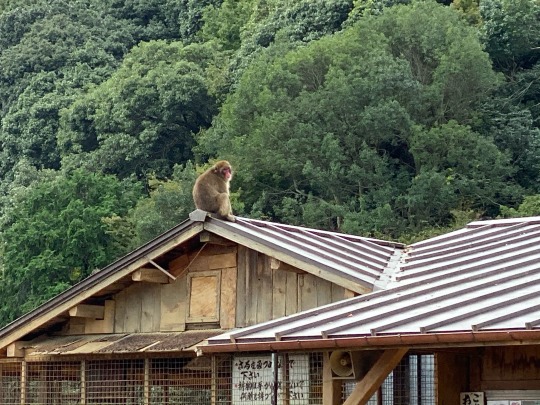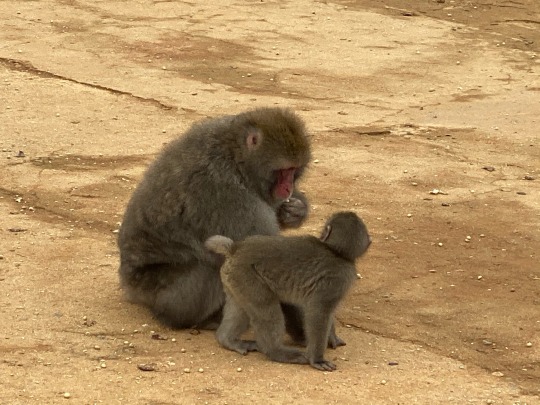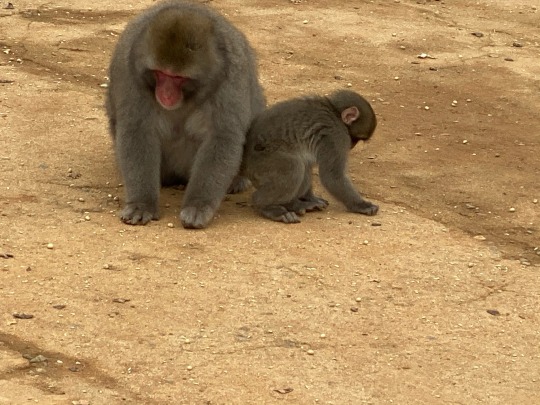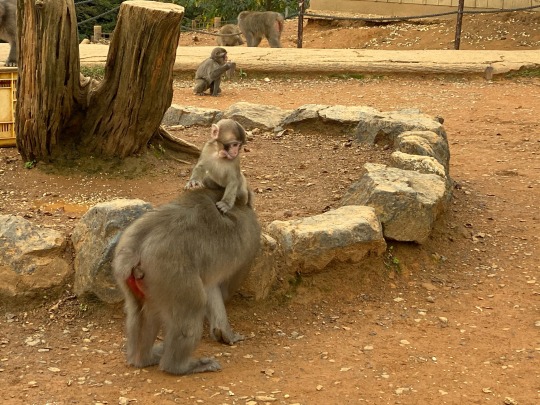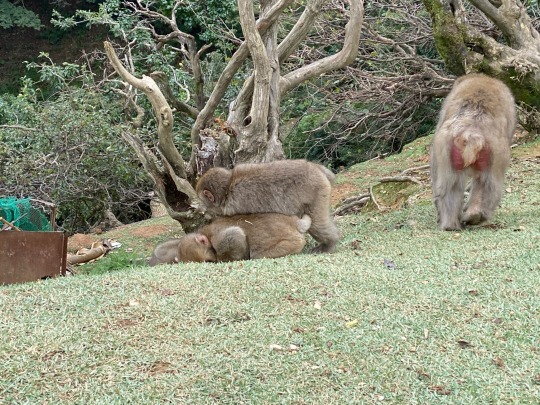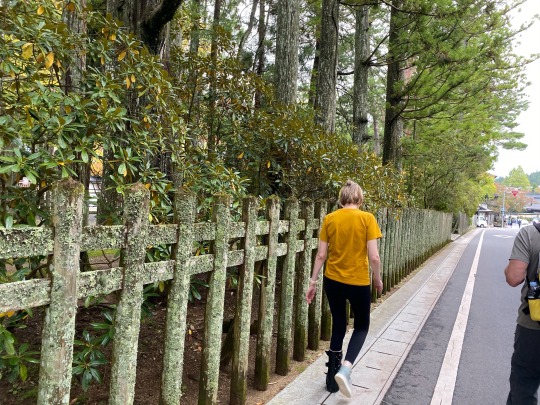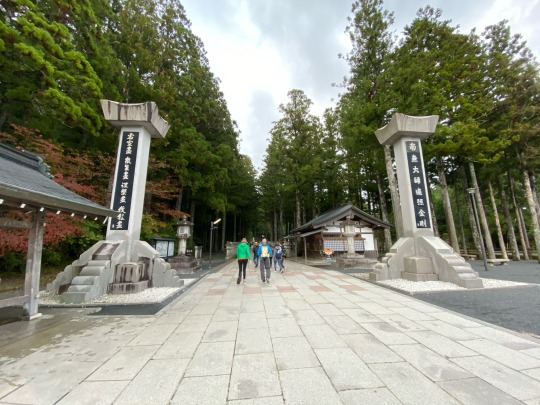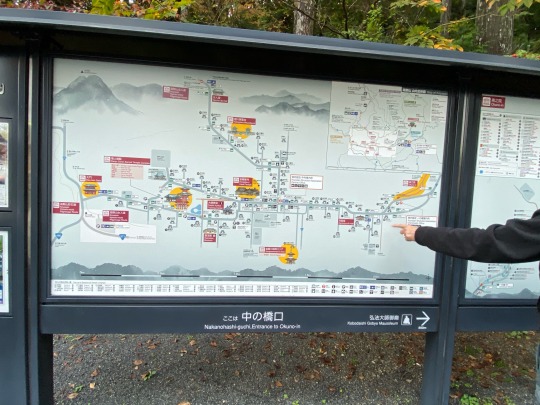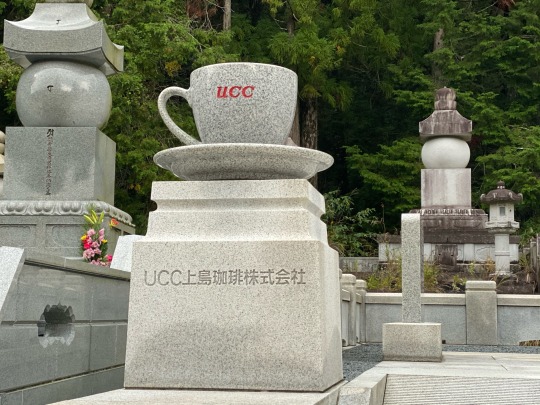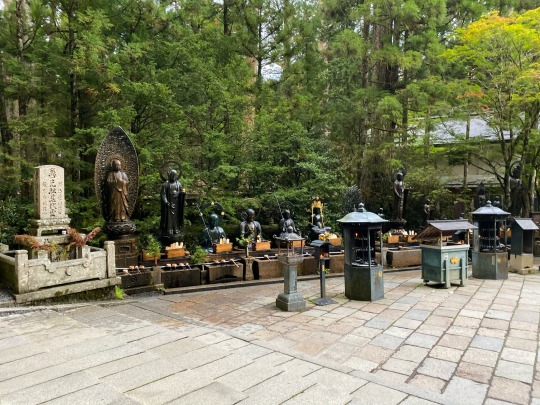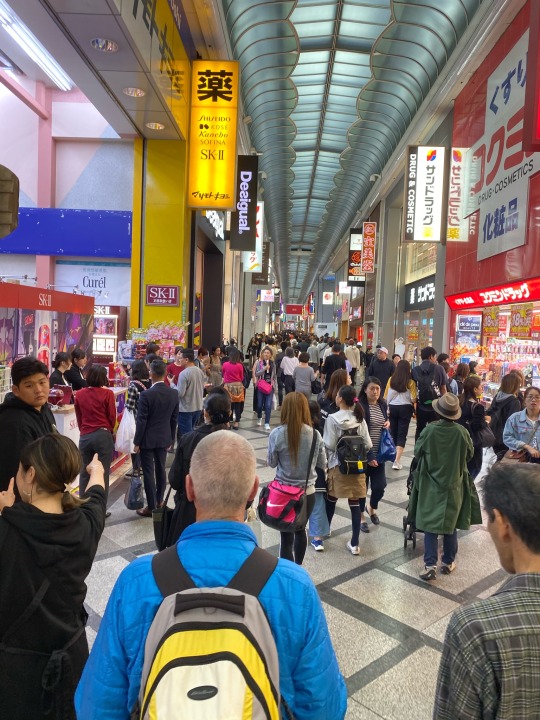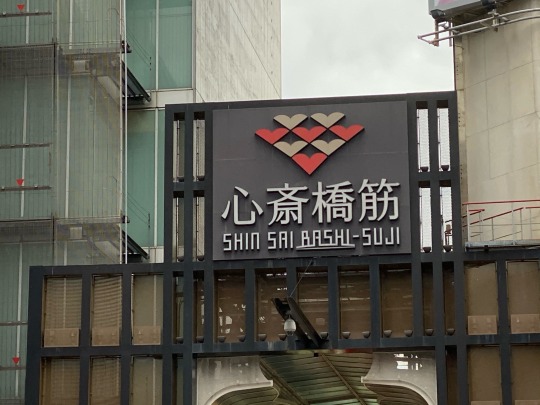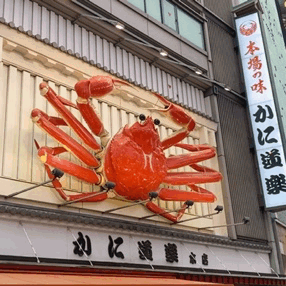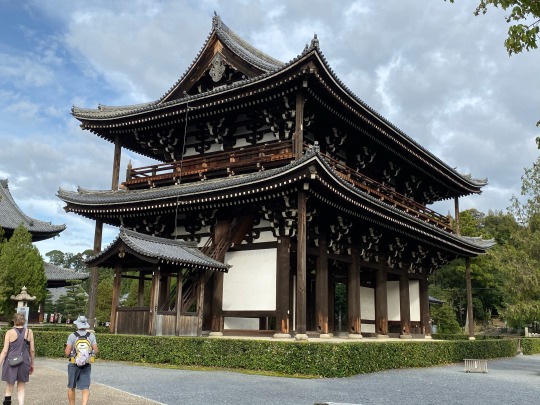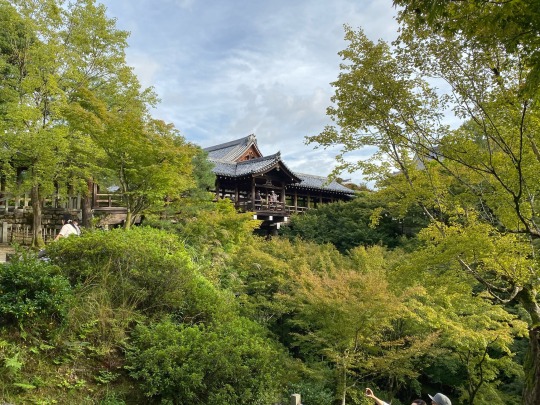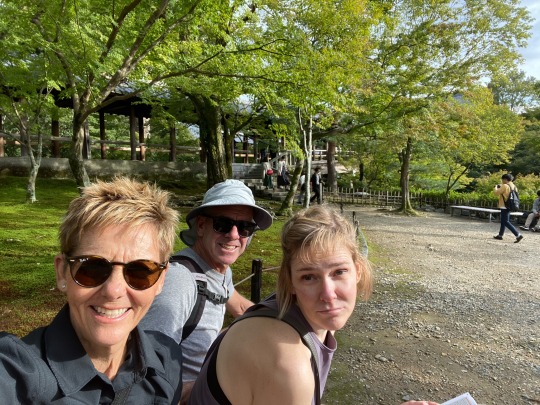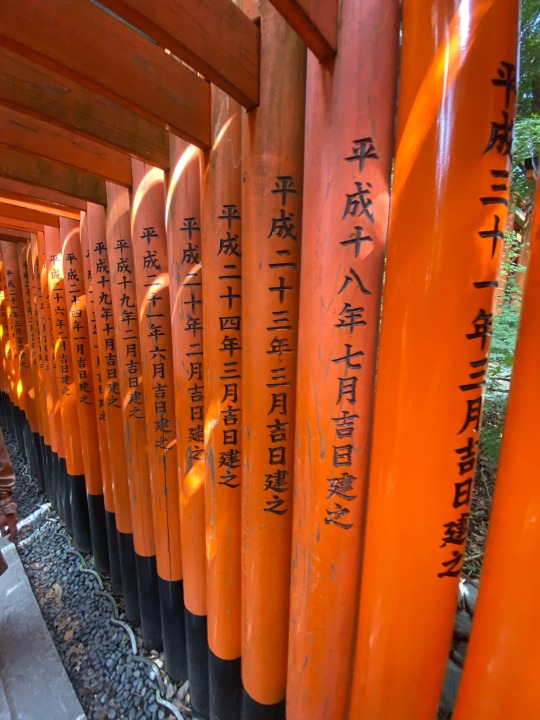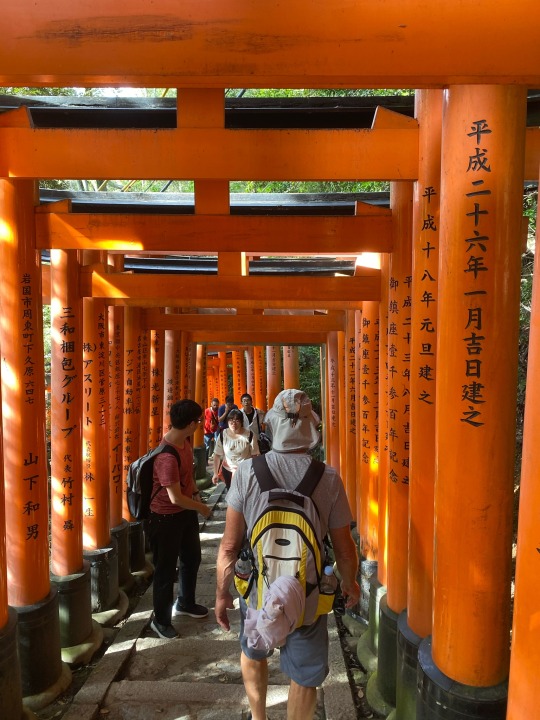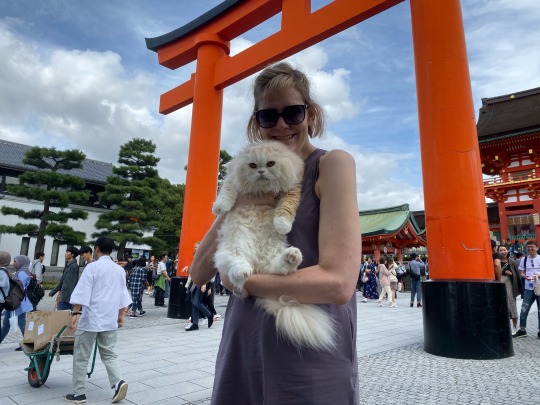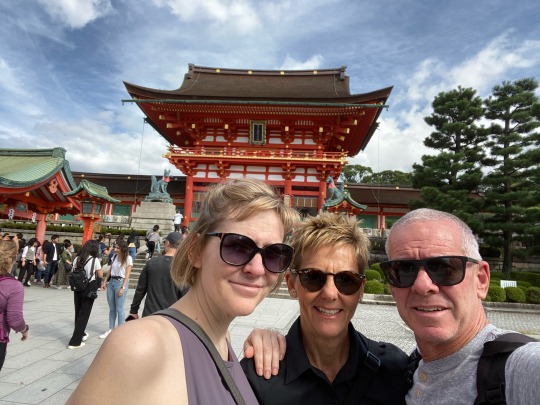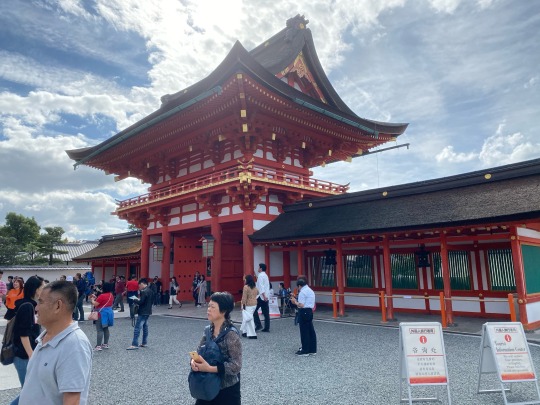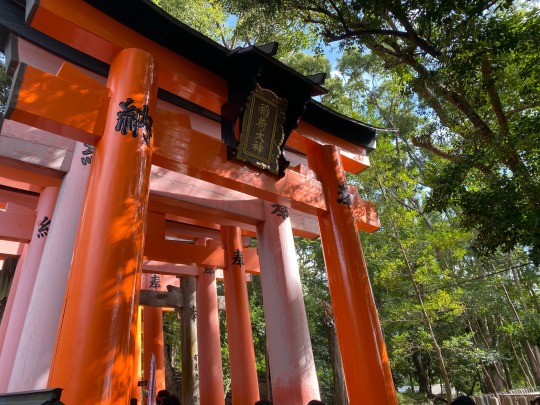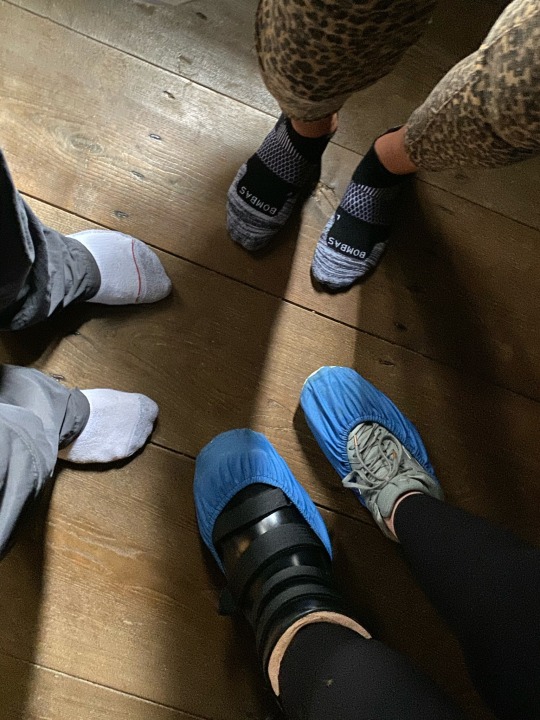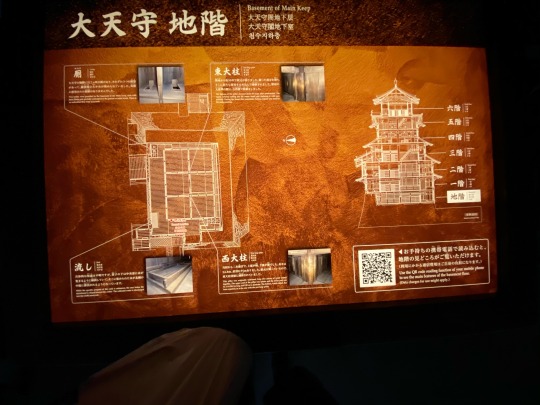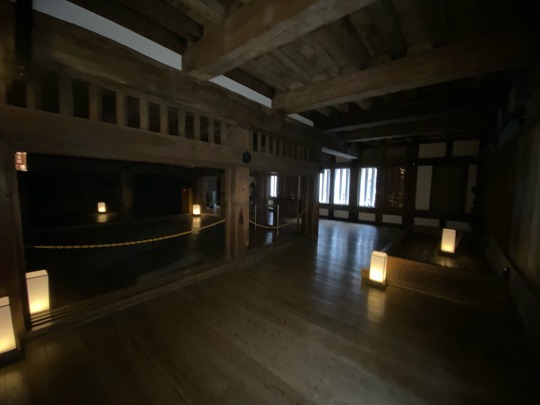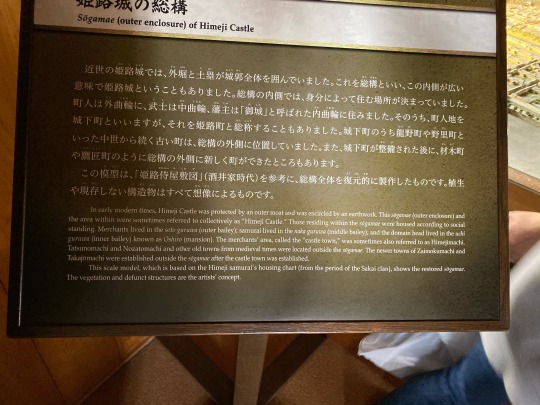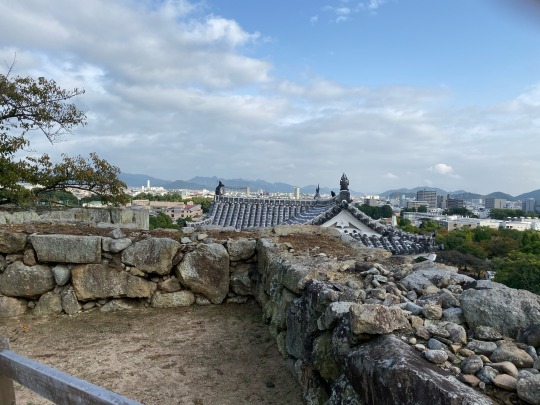Text



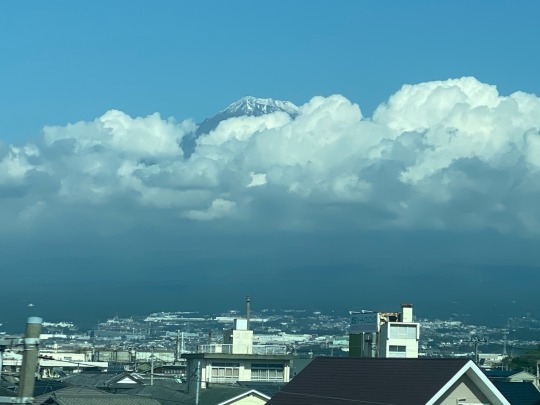
Monday, October 28, 2019
Well, after two train rides and making both of our flights we are almost home! Got to see a glimpse of Mt. Fuji this morning on the train, and now it is 2pm on that same day and we are on our Southwest flight to Sacramento. It has been an amazing trip, but it will be great to be home. Can’t wait to see Spinxy!!!!!
0 notes
Text






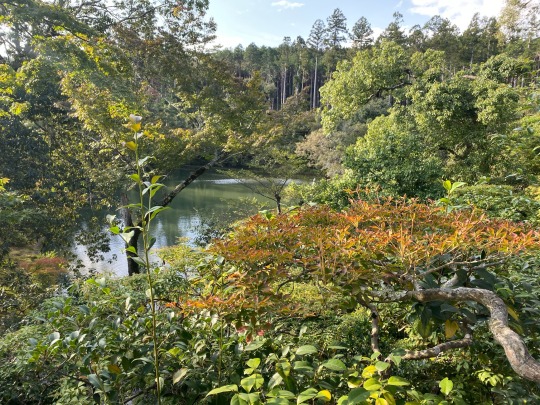
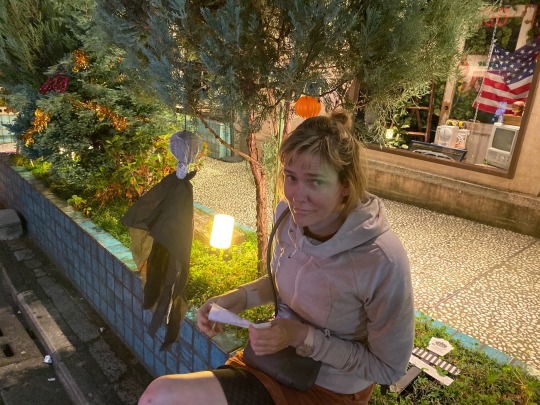


Sunday, October 27, 2019
Our last full day in Japan started out with our last run along the river, and a stop at Starbucks along the river to sit for a bit and enjoy this beautiful area. Then we spent the rest of the day visiting Kinkaku-ji (The Golden Pavilion) / Rokuon-ji Temple. Kinkaku-ji (金閣寺, literally "Temple of the Golden Pavilion"), officially named Rokuon-ji (鹿苑寺, literally "Deer Garden Temple"), is a Zen Buddhist temple in Kyoto, Japan. It is one of the most popular buildings in Japan, attracting many visitors annually. It is designated as a National Special Historic Site, a National Special Landscape and is one of 17 locations making up the Historic Monuments of Ancient Kyoto which are World Heritage Sites.
We finished our evening at our favorite restaurant, AIN SOPH Journey Kyoto, for one more delicious meal!
Tomorrow we have two trains and two planes to catch and if all goes well we will be home on Monday the 28th!
0 notes
Text



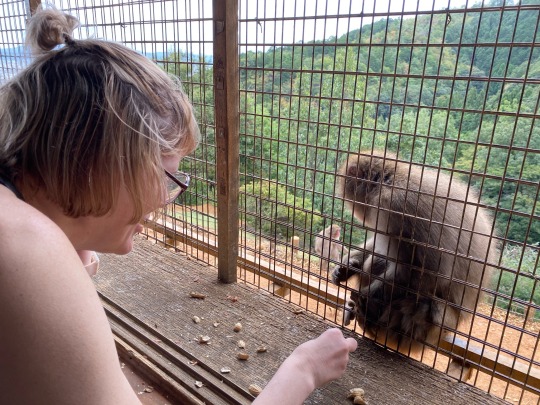
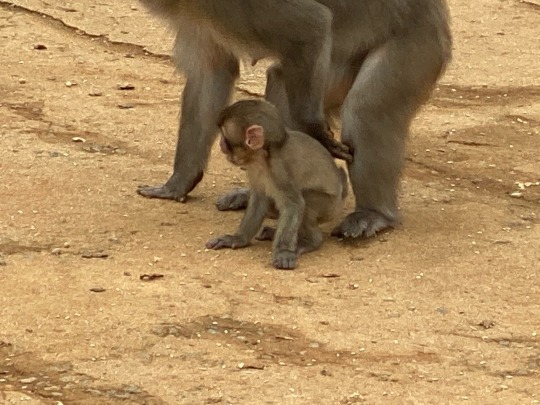

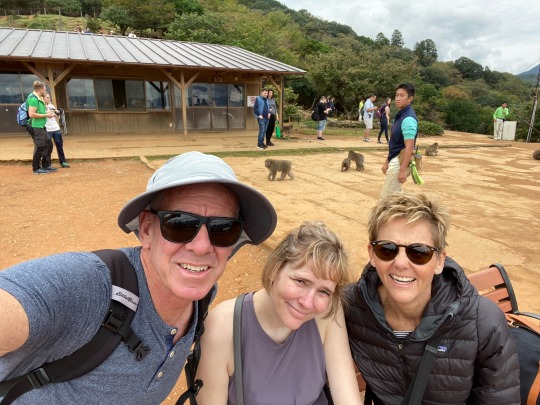



Saturday, October 26, 2019
Today we took a bus to the Arashiyama area and the Arashiyama Monkey Park Iwatayama along with the Bamboo Forest. What a beautiful area!
The park is located in Arashiyama, one of Kyoto’s busiest tourist areas, and is easily accessible by train. It boasts about 120 snow monkeys, which are also called “Japanese macaque.” They are native to Japan, and, yes, these are the type of monkeys seen in iconic photos in which they’re bathing at hot springs in winter. While the monkeys are human-fed (even tourists have a chance to feed them), they are still wild, the park assures. The “don’t stare” and don’t touch warnings should be followed, though, the friendlier monkeys come just centimeters away from visitors.
The hike up was a little tough for Jill, but she did it and truly enjoyed seeing the monkeys!
The bamboo forest was fun to walk through, with many people being pulled around in rickshaws. We had perfect weather today and we are enjoying our last few days in Japan!
0 notes
Text




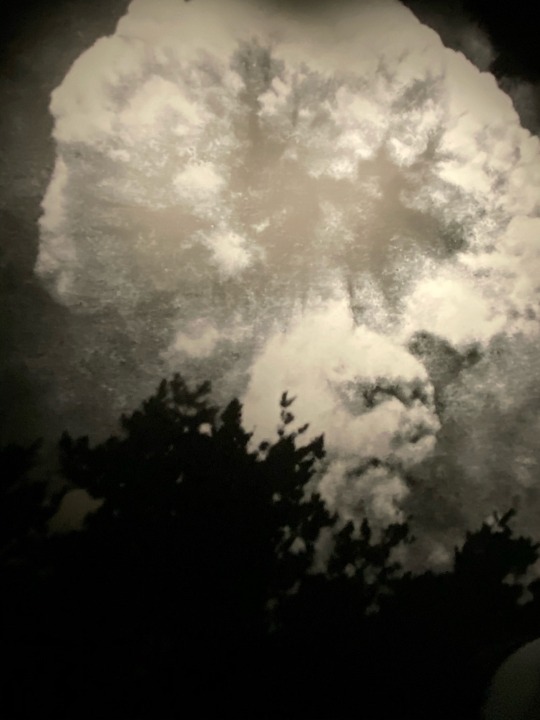





Friday, October 25, 2019
Today we took the bullet train to Hiroshima. We went directly to the Hiroshima Peace Memorial Museum. The Hiroshima Peace Memorial Museum is a museum located in Hiroshima Peace Memorial Park, in central Hiroshima, Japan, dedicated to documenting the atomic bombing of Hiroshima in World War II. The museum was established in August 1955 with the Hiroshima Peace Memorial Hall (now the International Conference Center Hiroshima [ja]). It is the most popular of Hiroshima's destinations for school field-trips from all over Japan and for international visitors. 53 million people had visited the museum from its opening in 1955 through 2005, averaging over one million visitors per year. The architect of the main building was Kenzō Tange. He main building displays personal belongings left behind by the victims and exhibits describing the horrors and devastation of the atomic bin to help children nvey what happen in Hiroshima on August 6, 1945. In the Easr building, you can access video testimonies of the A-bomb survivors, there was an exhibit about the dangers of nuclear weapons and another about Hiroshima history. Outside of the museum is Peace Park, the Cenotaph for the A-bomb victims, the Children’s Peace Monument, the Hypocenter, where the bomb detonated, the Atomic Bomb Memorial Mound, and the A-bomb Dome. At 8:15am on 6th August 1945, the first atomic bomb in human history was dropped on Hiroshima. Although, the Atomic Bomb Dome was located almost directly underneath the explosion, it somehow avoided complete destruction and the remains of the building still stand today. The residents of Hiroshima decided to keep this tragic reminder of war intact. The site was designated as a World Heritage Site in 1996.
This was such an interesting and meaningful place to visit. We learned so much about what happened on this day in history, and were so amazed at the city today. There we many school children visiting the site, and we enjoyed interacting with them. A few came up to us and asked about where we were from and what peace meant to us. And then they gave us origami cranes as a thank you.
1 note
·
View note
Text
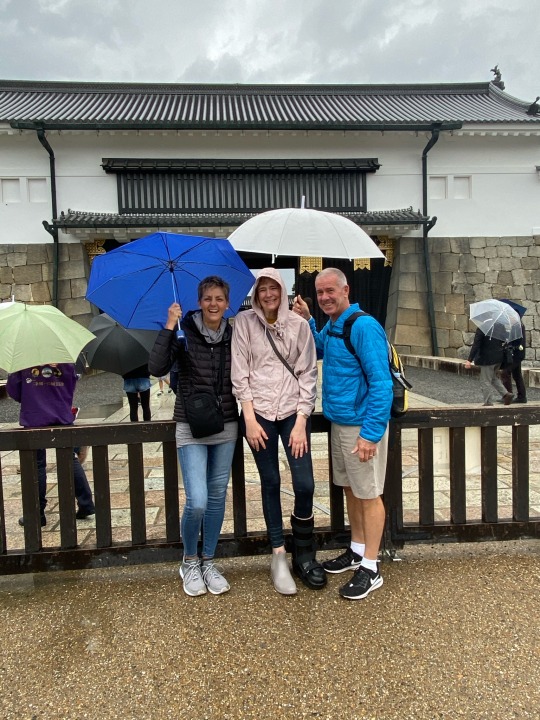
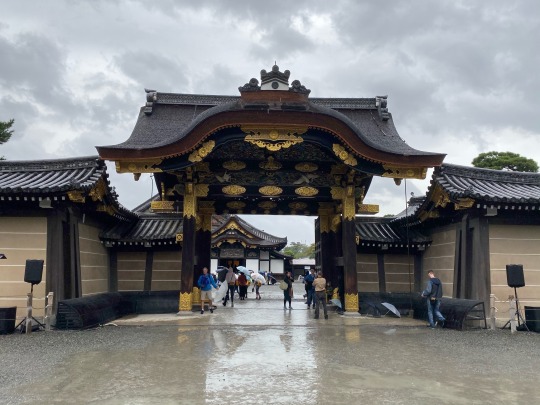



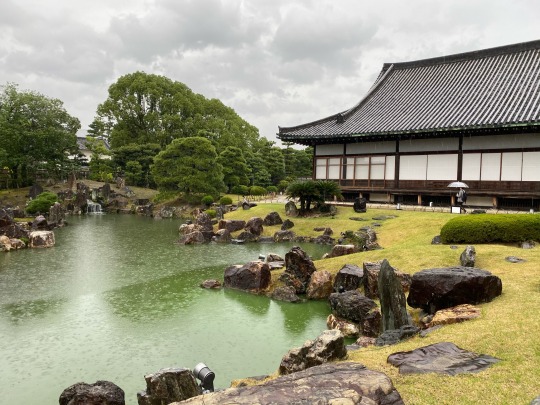
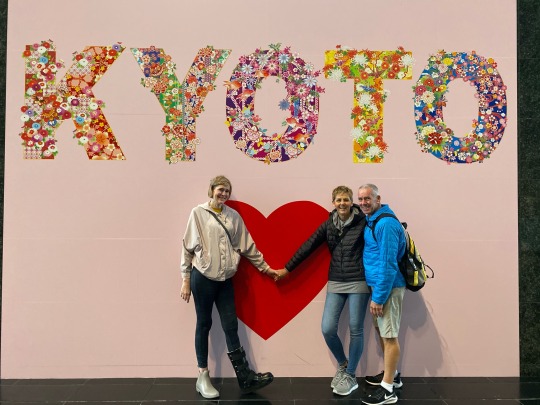
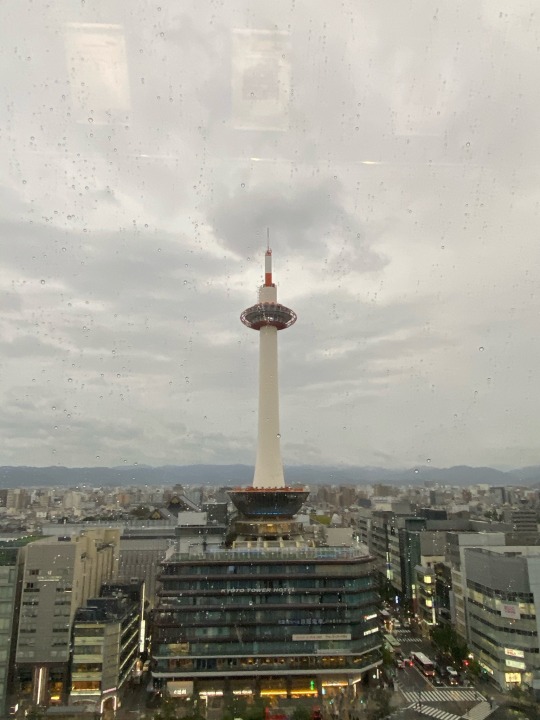
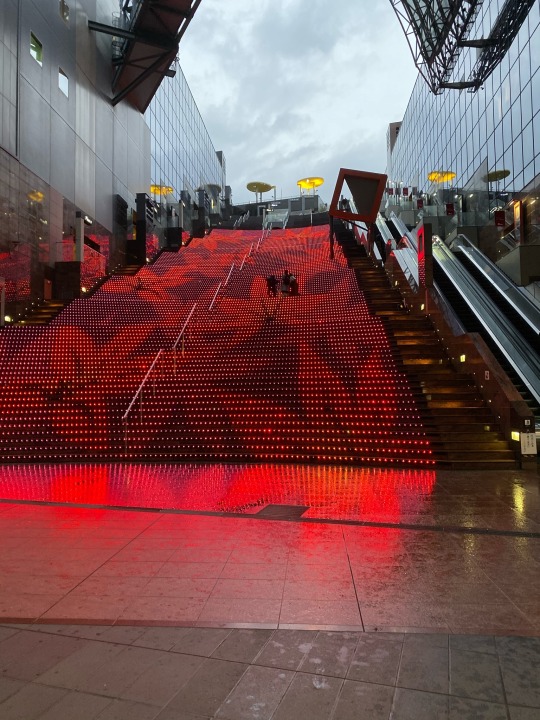
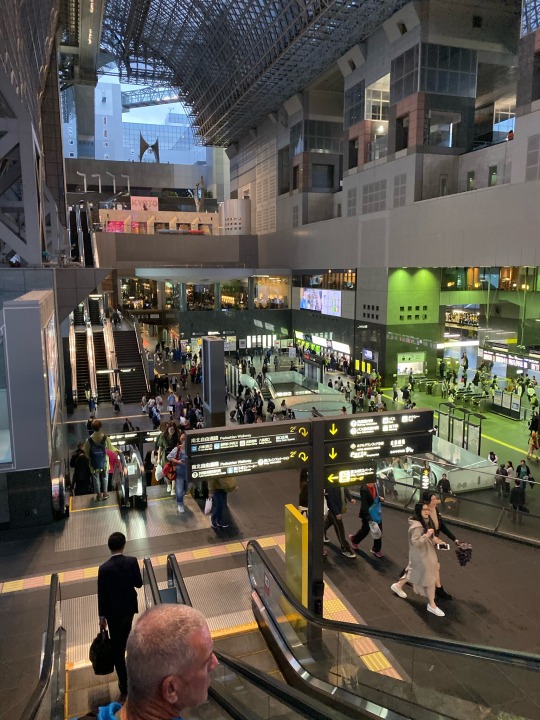
Thursday, October 24, 2019
Rainy day today! We got a run in before the rain. Then we headed out to Nijo-Jo Castle. Nijo Castle (二条城, Nijōjō) was built in 1603 as the Kyoto residence of Tokugawa Ieyasu, the first shogun of the Edo Period (1603-1867). His grandson Iemitsu completed the castle's palace buildings 23 years later and further expanded the castle by adding a five story castle keep. After the Tokugawa Shogunate fell in 1867, Nijo Castle was used as an imperial palace for a while before being donated to the city and opened up to the public as a historic site. Its palace buildings are arguably the best surviving examples of castle palace architecture of Japan's feudal era, and the castle was designated a UNESCO world heritage site in 1994. Nijo Castle can be divided into three areas: the Honmaru (main circle of defense), the Ninomaru (secondary circle of defense) and some gardens that encircle the Honmaru and Ninomaru. The entire castle grounds and the Honmaru are surrounded by stone walls and moats.
After the castle we took a train - a very crowded train which the last group of people getting on actually pushed gently so that everyone squeezed in - to Kyoto station. There we explored the Sky Walk at the tippy top of the station, along with the grand stairway that they project all kinds of scenes on. It is an amazing station. Then a quick stop at Starbucks, and then back to our apartment.
0 notes
Text

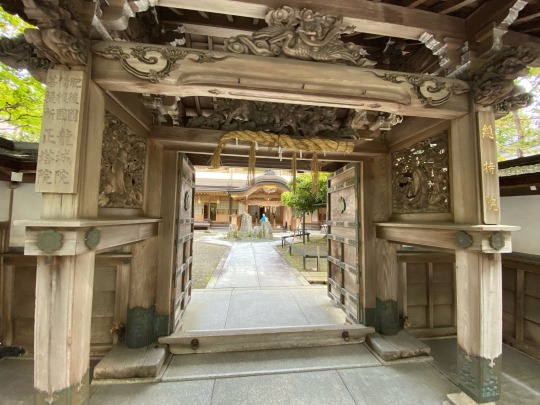

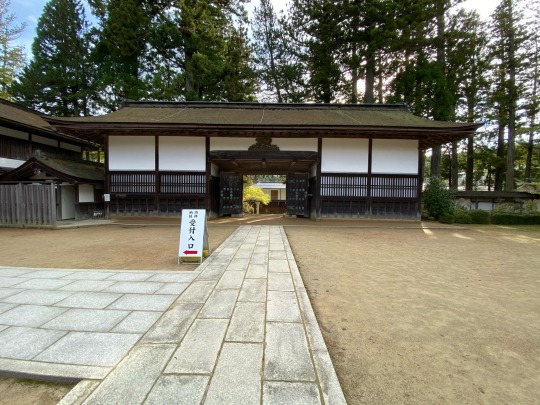
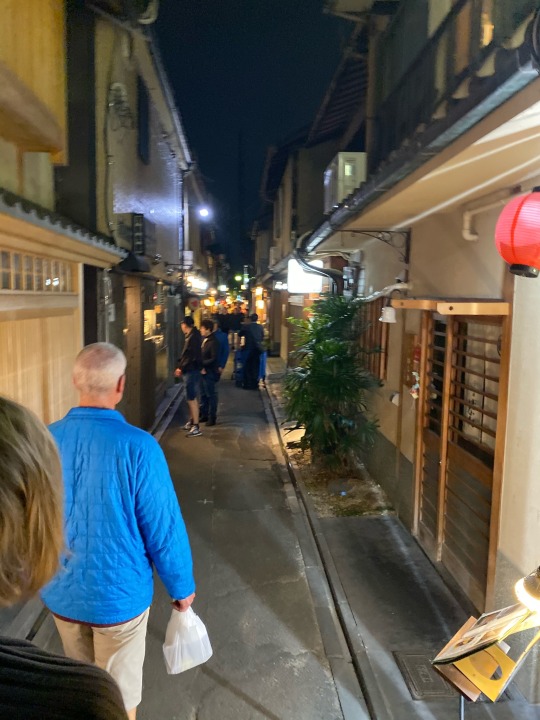





Wednesday, October 23, 2019
Well, sleeping on thin mattresses on the floor is a little rough, but we truly enjoyed our stay in Koyasan! It is beautiful in the mountains here. The Japanese Maples are all beginning to turn colors and everything is so lush. We visited Kongobu-ji Temple on our way back to the bus stop, then made the trek back to our comfy apartment in Kyoto. After resting up a bit, we headed out to the Nishiki Marketplace which is a marketplace in downtown Kyoto, located on a road one block north and parallel to Shijō Street (四条通 Shijō-dōri) and west of Teramachi Street (寺町通 Teramachi-dōri). Rich with history and tradition, the market is renowned as the place to obtain many of Kyoto's famous foods and goods. We bought some figs and some little baby soy donuts that were delicious! Then we went to dinner at one of our favorite vegan places that has restaurants in Tokyo and Kyoto. Next we visited Pontocho, arguably the single most atmospheric street in all of Kyoto. Pontocho Alley is a great place to do some geisha spotting in the evening. We, unfortunately did not see any geisha. So we moved on to Gion. Gion is Kyoto’s geisha district, with hostesses in colorful kimonos often sighted on the wooden Tatsumi Bridge, or amid upscale Japanese restaurants and boutiques on Hanamikoji Street. Gion Corner hosts traditional Kyomai dances, while Kennin-ji Temple is known for its Zen garden and Yasaka Shrine has seasonal festivals in a lantern-lit courtyard. Nightlife ranges from quiet sake bars to buzzing, pub-like izakayas.
Both of these areas were fun to visit at night. Very busy with tourists though. Back to the apartment for a well needed good night’s sleep!
0 notes
Text

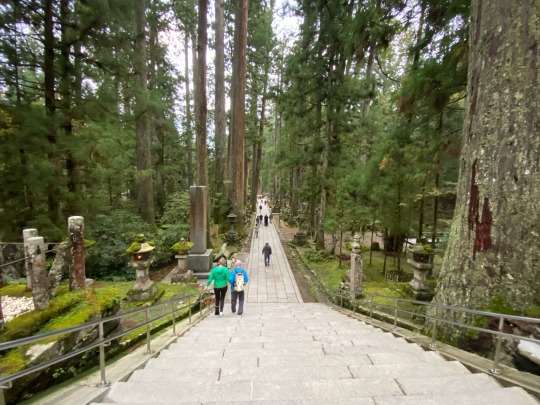






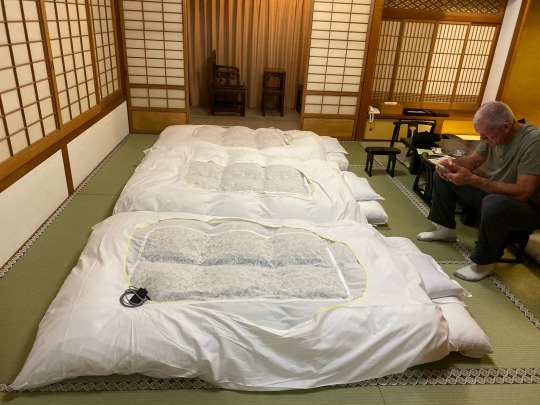

Tuesday, October 22, 2019
Mike and I started our day with a run along the river, and a stop at the market, then back to the apartment to meet up with Jill for our next adventure. After 3 train rides, 1 funicular ride, and 1 bus ride, we made it to the UNESCO World Heritage Site, Koyasan. We are staying at Soujiin, which is run by Buddhist monks. We were welcomed with a small snack and matcha tea, and then brought up to our room where we will spend the night. Mount Koya (高野山, Kōyasan) is the center of Shingon Buddhism, an important Buddhist sect which was introduced to Japan in 805 by Kobo Daishi (also known as Kukai), one of Japan's most significant religious figures. A small, secluded temple town has developed around the sect's headquarters that Kobo Daishi built on Koyasan's wooded mountaintop. It is also the site of Kobo Daishi's mausoleum and the start and end point of the Shikoku 88 Temple Pilgrimage. Kobo Daishi began construction on the original Garan temple complex in 826 after wandering the country for years in search of a suitable place to center his religion. Since then over one hundred temples have sprung up along the streets of Koyasan. The most important among them are Kongobuji, the head temple of Shingon Buddhism, and Okunoin, the site of Kobo Daishi's mausoleum. Koyasan is also one of the best places to experience an overnight stay at a temple lodging (shukubo) where you can get a taste of a monk's lifestyle, eating vegetarian monk's cuisine (shojin ryori) and attending the morning prayers. Around fifty temples offer this service to both pilgrims and visitors.
Before dinner, we took a short bus ride to Okunoin-mae. Here we walked out to Kobodaishi Gobyo Mausoleum, Lantern Hall, and Gobo no hashi Bridge. We made it back to the temple just in time for dinner at 6pm sharp. All the food is vegan and it was delicious! A very interesting and varied menu. We had our own little room where we ate. It was a fun experience. In the morning we will go to a 6am Buddhist morning service, then breakfast at 7am. We are sleeping on mats with bean bag pillows. We are truly enjoying this new experience. It is gorgeous here up in the mountains and the fall colors are just coming out. More to come tomorrow...
1 note
·
View note
Text

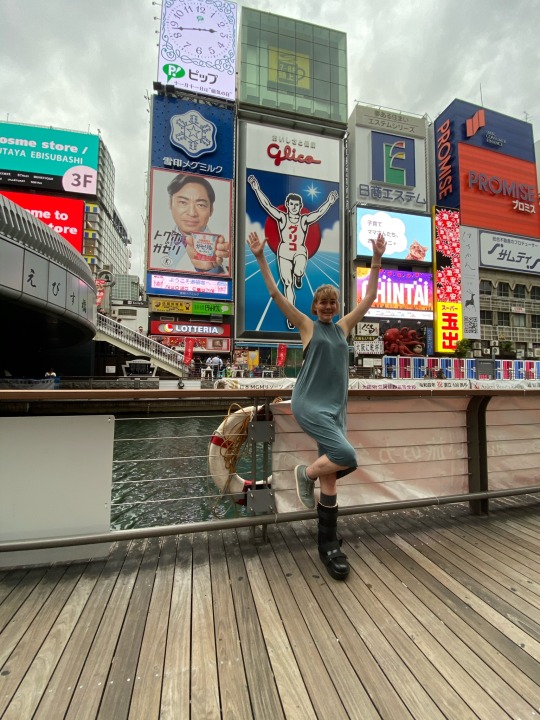




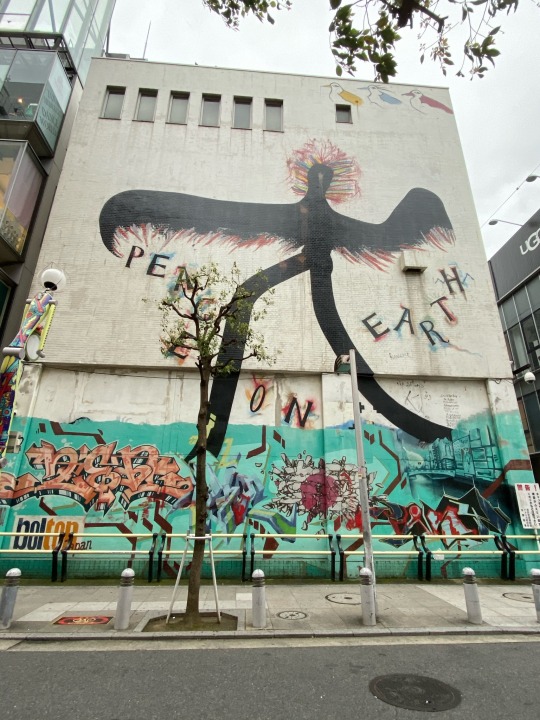
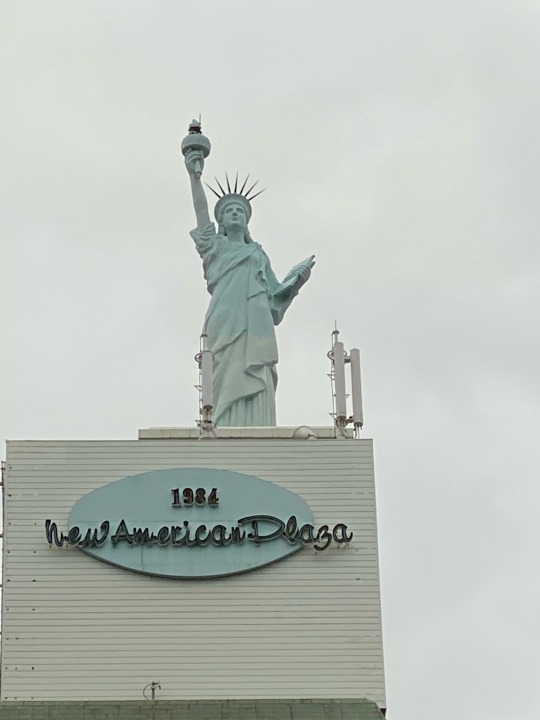
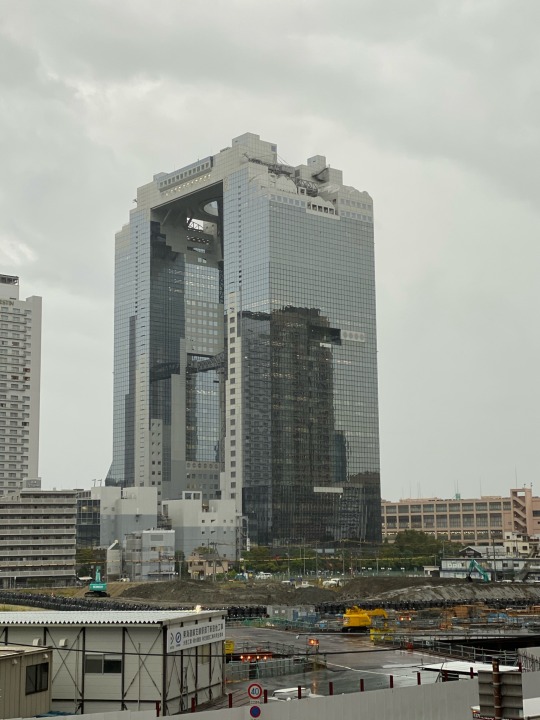

Monday, October 21, 2019
Train ride to Osaka! What a crazy fun place! First we had lunch at the area’s first vegetarian/vegan restaurant that has been in business since 1991 called Green Earth. It was delicious! Then we headed off for a self guided city walk -Sights of Minami. First we went to Shinsaibashi-suji, a famously long covered market street which runs down to the Dotombori-gawa canal. Then we walked through the Dotombori strip which is all food stands and restaurants. Then we went down the Tombori River walk to the Amerika-Mura area where you find a mini Statue of Liberty and a beautiful Peace on Earth mural. Then while going back to the train station, we caught a glimpse of the Umeda Sky Building a spectacular high rise building in the Kita district of Osaka, near Osaka and Umeda Stations. It is also known as the "New Umeda City". The 173 meter tall building consists of two towers that are connected with each other by the "Floating Garden Observatory" on the 39th floor. The observatory offers great views of the city through its windows and from its open-air deck. In the basement, there is a restaurant floor that replicates a town of the early Showa Period, while offices occupy most other floors.
0 notes
Text

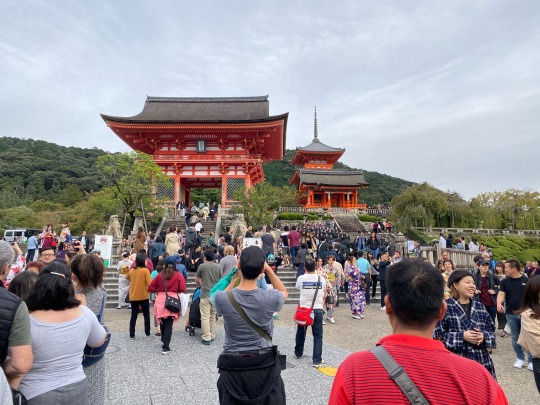
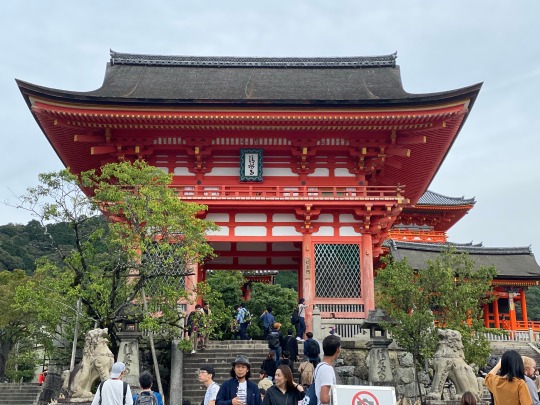
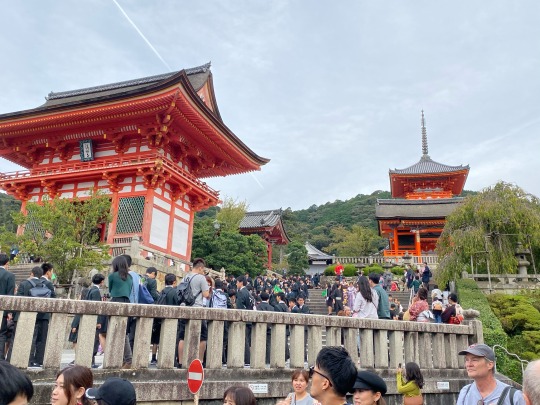


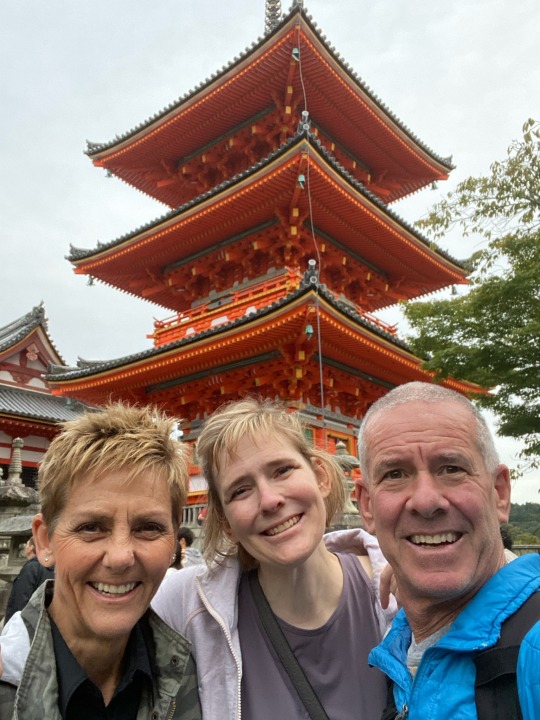
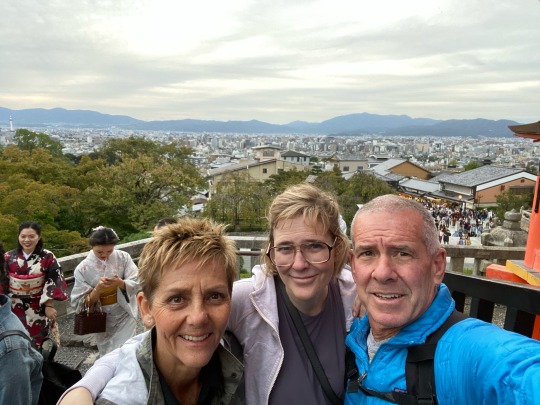

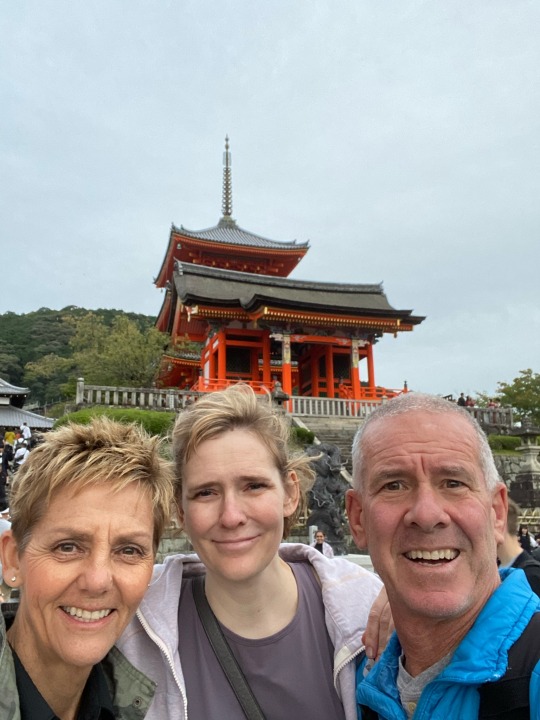
Sunday, October 20, 2019
Temple day in Kyoto! Our first temple was Fushimi Inari-Taisha. Fushimi Inari-taisha (伏見稲荷大社) is the head shrine of the kami Inari, located in Fushimi-ku, Kyoto, Kyoto Prefecture, Japan. The shrine sits at the base of a mountain also named Inari which is 233 metres (764 ft) above sea level, and includes trails up the mountain to many smaller shrines which span 4 kilometres (2.5 mi) and take approximately 2 hours to walk up. Mike and I walked up quite a bit of the mountain, but didn’t want to leave Jill behind too long. We had more temples to get to!
Just outside the temple we were eating our lunch and we saw a gentleman photographing his cat laying on a chair in front of the temple. He then picked up his cat, put it in a sling and started walking away. He saw us taking pictures of home and he cane over and asked if Jill would like to hold the cat. He was a very sweet man and so proud of his cat.
Temple number 2 - Tofuku-ji is a Buddhist temple in Higashiyama-ku in Kyoto, Japan. Tōfuku-ji takes its name from two temples in Nara, Tōdai-ji and Kōfuku-ji.[1] It is one of the so-called Kyoto Gozan or "five great Zen temples of Kyoto". Its honorary sangō prefix is Enichi-san (慧日山). Tōfuku-ji was founded in 1236 by the imperial chancellor Kujō Michiie.[2] He appointed the monk Enni as founding priest, who had studied Rinzai Zen Buddhism in China under the monk Wuzhun Shifan. The temple was burned but rebuilt in the 15th century according to original plans. Tofuku-ji was one of the five temples of the Five Mountain System.
Temple number 3 - Kiyomizu-dera Kiyomizudera (清水寺, literally "Pure Water Temple") is one of the most celebrated temples of Japan. It was founded in 780 on the site of the Otowa Waterfall in the wooded hills east of Kyoto, and derives its name from the fall's pure waters. The temple was originally associated with the Hosso sect, one of the oldest schools within Japanese Buddhism, but formed its own Kita Hosso sect in 1965. In 1994, the temple was added to the list of UNESCO world heritage sites. Kiyomizudera is best known for its wooden stage that juts out from its main hall, 13 meters above the hillside below. The stage affords visitors a nice view of the numerous cherry and maple trees below that erupt in a sea of color in spring and fall, as well as of the city of Kyoto in the distance. The main hall, which together with the stage was built without the use of nails, houses the temple's primary object of worship, a small statue of the eleven faced, thousand armed Kannon.
What a beautiful day we had today! Tomorrow we are off to Osaka!
0 notes
